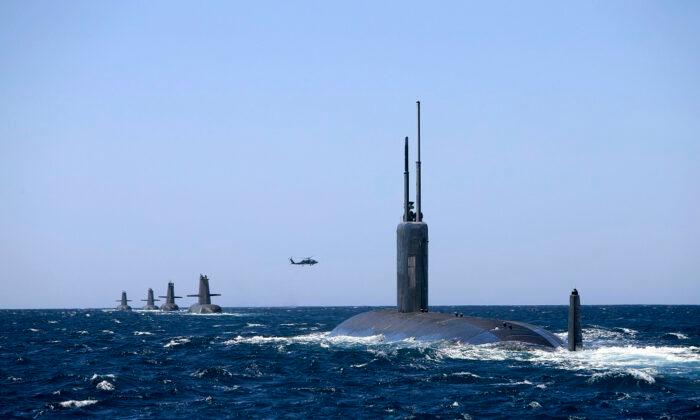Australia’s earmarked $10 billion nuclear-powered submarine base will have ramifications across the Indo-Pacific region and demonstrates the “magnitude” of AUKUS in action, according to a defence expert.
Such a facility would be built from the ground up and will become a major employment, technology, and tourism hub—because of visiting allied vessels.
Morrison outlined three potential sites for the base, Brisbane, Newcastle, or Port Kembla, the latter two being just north and south of Sydney.
Funding for the base will be included in the upcoming federal budget, and a final decision made in 2023.

“It shows the scale of this endeavour between Australia, the U.S. and the UK—because it will be a significant new military base for the Indo-Pacific that starts to show that AUKUS is real and the serious work to deliver the nuclear submarines and other technologies are actually happening,” Michael Shoebridge, defence director at the Australian Strategic Policy Institute, told The Epoch Times.
Construction of the base would also demonstrate the sheer size of the program to locals and the long lead time needed for the acquisition of nuclear-powered submarines, he said.
“The benefits to the chosen site will be enormous economically and as a means of generating high technology skills and employment,” he said. “That should be even more the case if the new base is built to do deep maintenance and sustainment, not just have wharves and do routine maintenance.”
Australia’s current base for its Collins-class submarine fleet is in Fleet Base West near Perth in Western Australia. While it is a strategically important area, an ongoing difficulty has been the recruitment of submariners and lack of infrastructure, which an east coast base is expected to alleviate given the more extensive population base.
“An optimal east coast base would provide home-ported submarines with specialised wharves, maintenance facilities, administrative and logistics support, personnel amenities, and suitable accommodation for submarine crews and support staff.”
Salvatore Babones, associate professor at the University of Sydney and expert in the Asian political economy, said that while the move seemed to be prompted by the upcoming federal election, he noted there was a need for a new base outside of existing facilities in Sydney Harbour.
“The location of Australia’s Fleet Base East in Sydney is crowded and obsolete,” he told The Epoch Times in an email. “A new submarine base might be the prompt for moving the Australian navy out of Sydney to somewhere more useful and secure.”
“But there’s a lot of opposition in the navy to leaving its highly desirable location in the tourist centre of Sydney,” he said.
Meanwhile, Independent Senator Rex Patrick, a former Australian naval officer, accused the government of “pork-barrelling.”
“It’s a pre-election announcement that offers the prospect of jobs and economic activity,” he told ABC Radio on March 8. “Obviously, the (base) is a nice carrot for anyone that might consider voting for the Coalition (government).”
“The three options that he picked were scored very low in the analysis,” he added.
“The first cab off the rank or the best city for a future submarine on the east coast was Sydney, followed by Jervis Bay.”
The study, however, was created prior to any possibility of Australia acquiring nuclear-powered submarines, and placing highly-sensitive nuclear technology hubs close to Sydney—already the financial hub of the country—would present a strategic risk.
Further, two earmarked sites, Newcastle and Port Kembla (electorate of Cunningham) are both controlled by the Australian Labor Party (ALP). In turn, Brisbane’s Bonner—where the Port of Brisbane is located—is presided over by Liberal MP Ross Vasta.





